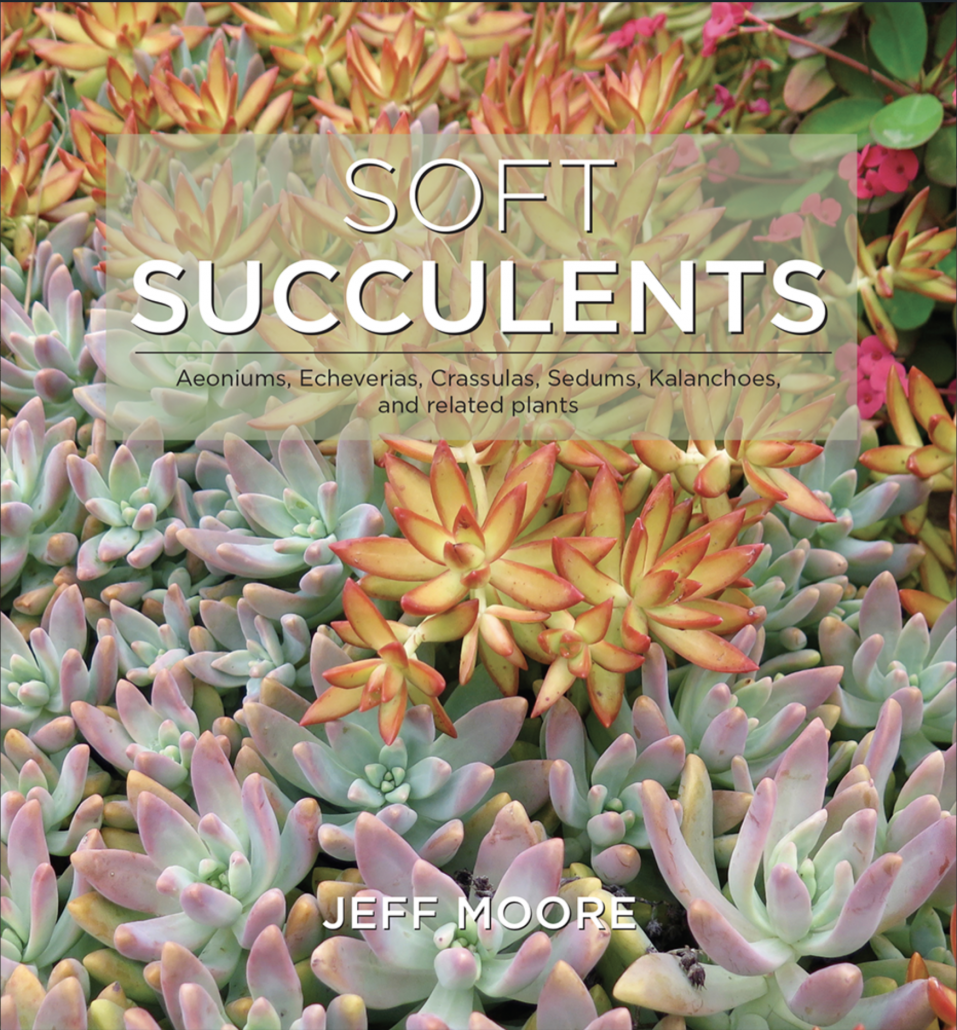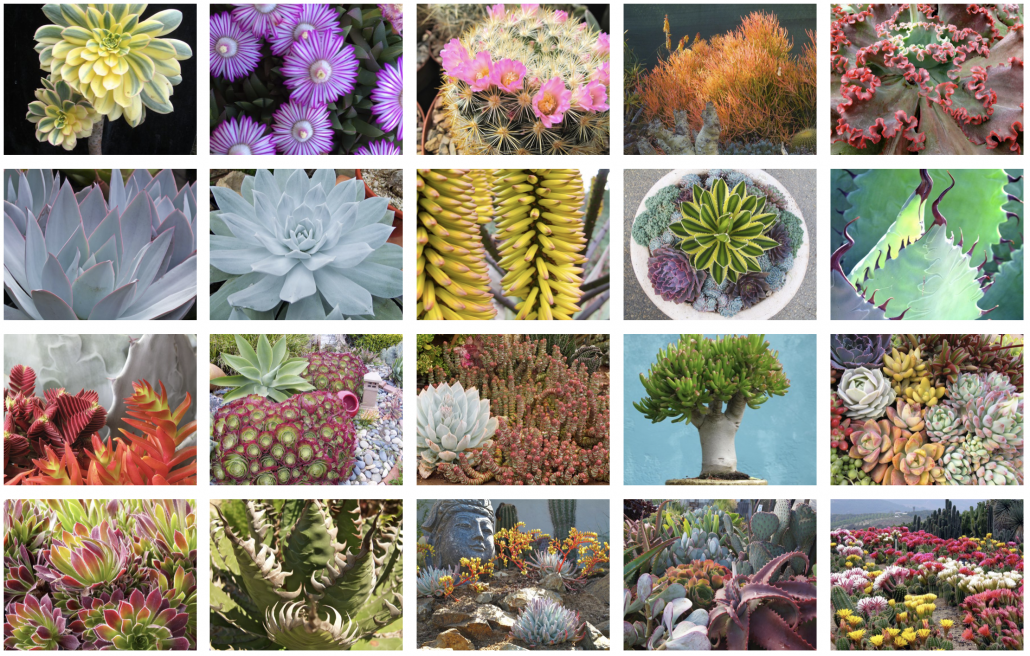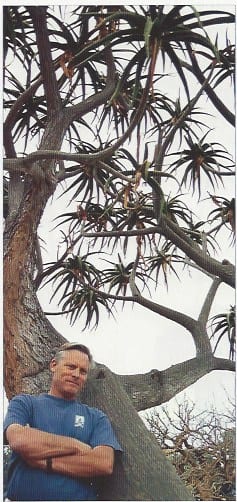
Soft Succulents: Jeff Moore’s Stunning New Book

Jeff Moore’s books are the See’s of eye-candy, filled with photos that show the very souls of fleshy plants. Moore is a succulent expert, garden designer, photographer and author who for 26 years has owned Solana Succulents nursery in Solana Beach, near San Diego.
We met in 2003, back when I was covering gardening for magazines. He struck me as unusually normal. Generally I’d hang out with an endearing plant geek until I understood his or her passion, and then I’d write about it. I interviewed many collector-experts, but (apologies to those still around), most were off-the-charts eccentric. Not Moore, a regular guy who just happened to have a thing for fleshy plants. The only weird thing was that he made a living at it. I asked this surfer and family man (who usually wears shorts, sunglasses and sandals—very Solana Beachy) which succulent we should feature. He chose Aloe bainesi (Aloe barberae). [Scroll down for an excerpt.]
His new book, Soft Succulents, is the sequel to Under the Spell of Succulents and Aloes and Agaves in Cultivation. Moore’s books are self-published, which imbues them with a refreshing persona and makes them an excellent value (none are over $35).
Moore’s nursery specializes in plants for Southern and coastal CA from the Bay Area south. Not surprisingly, Soft Succulents skims over cold-climate varieties and devotes 20 pages to Dudleya, an underutilized genus native to California and Baja. Echeverias, also from Mexico, have 52 pages with 63 varieties. Aeoniums, challenging to grow elsewhere in the US, have 53 pages with 46 varieties. (And to think I grow only 14!)
Many of these photos from Solana Succulents’ website appear in Soft Succulents ~

A few favorite quotes from Moore’s latest (and arguably loveliest) book:
“You could take a dive into and roll around on any of these juicy creatures, and the only damage would be to the plants and maybe stains on your clothes. These softies will pass the nervous grandma test.”
“Consider blending them with at least a few of their more heavily armored relatives…my kids and animals grew up around the spiky stuff, and they learned some valuable life lessons from daddy’s plants.”
“I would estimate that well over half of the species, cultivars or hybrids that I have at my nursery were either unavailable or yet to be created when I opened in the early nineties.”
“Echeveria ‘Bubble Machine’ is either a true beauty of genetic manipulation, or an example of man’s inhumanity to plant.”
“If you’ve tried and killed a traditional bonsai tree, keep the pot and try a jade, such as Crassula ‘Hobbit’ at left.”
To nit-pick, I would have preferred the plants presented alphabetically by genus. Although most of them are, it’s odd finding Sempervivum in the front and Cotyledon in the back. There are nomenclature glitches (such as different spellings of the same plant) and formatting inconsistencies (i.e. single quotes, italics and the like). But, as it turns out, the one error I thought was egregious wasn’t.
I figured “Toelken” in a header was a misspelling of “Tolkien” (as in J. R. R.). However, on page 196, re crassulas ‘Hobbit’ and ‘Gollum’, Moore explains: “The fanciful names are attributed to Helmut R. Toelken, who published a thesis on the revision of the crassulaceae in 1977. Although no relation to the J.R.R. Tolkien of Lord of the Rings renown, someone must have been inspired by the similar names to bestow these cultivars with their monikers.” Well OK, then!
From “Aloes Aloft,” the article I wrote about Moore for the June, 2004 issue of San Diego Home/Garden magazine:
“People speculate that Seuss drew his multiheaded palms after seeing Aloe bainesii,” Moore says, “But I doubt it. Back in the ’50s and ’60s, there were maybe a couple in all of San Diego. Aloe bainseii just happens to look like a Dr. Seuss tree, not the other way around.”
Inside Moore’s mind is a map with locations of memorable succulents highlighted.
“I notice them when I’m driving around. Each one is a piece of art.”

Photo: Mary Beiler
Fourteen years and three books later, Moore has provided the horticultural world with impressive photo galleries of nearly every kind of succulent. And he’s not finished. In the works is a book on cacti and spiky euphorbias. Such plants are gaining popularity, and I can attest that no other succulents are as much fun to photograph. If Moore’s previous books are a visual feast, the next will be desert (pun intended).
Above: In one of my earliest YouTube videos, Moore makes a couple of container gardens on the tailgate of his pickup truck.


Thanks for the feedback, Cubert!
I am looking for this book.
You can order from his website. His books are fantastic!
http://www.solanasucculents.com/books/
Sorry. I see he is sold out.